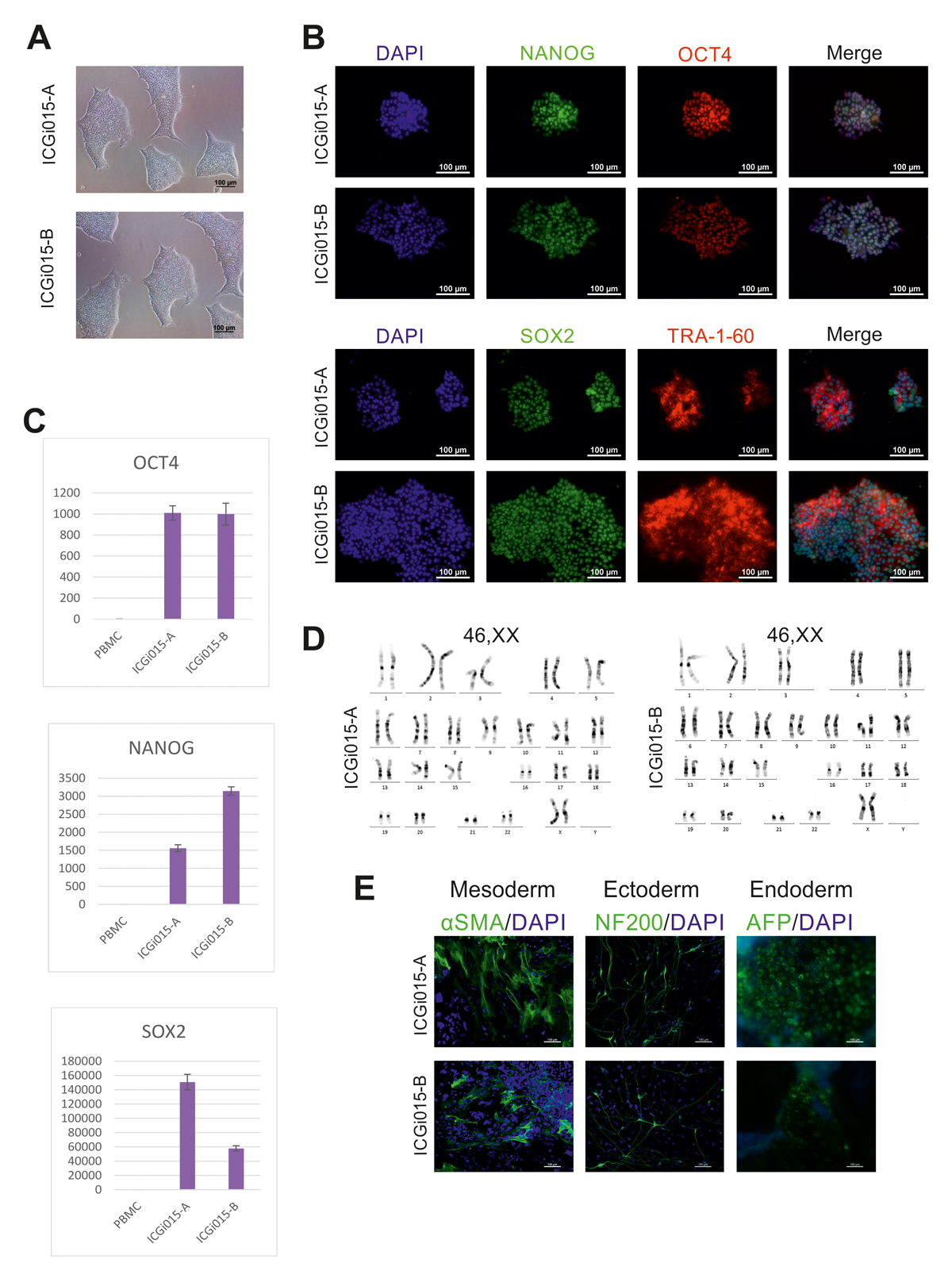Parkinson’s disease
Parkinson’s disease (PD) is one of the most common neurodegenerative diseases. The development of the disease is associated with the death of neurons, mainly in the substantia nigra, which produce the neurotransmitter dopamine. Insufficiency of dopamine causes a range of severe symptoms, among them: bradykinesia, muscle rigidity and tremor, which leads to disability of patients. Using non-integrating episomal vectors the iPSC lines ICGi015-A (https://hpscreg.eu/cell-line/ICGi015-A) and ICGi015-B (https://hpscreg.eu/cell-line/ICGi015-B) were generated from blood mononuclear cells of PD patient, carrying three SNPs, associated with PD development. These iPSC lines can be used to study the cellular and molecular aspects of PD pathogenesis and to test new drugs.

Parkinson’s disease (PD) is one of the most common neurodegenerative diseases. The development of the disease is associated with the death of neurons, mainly in the substantia nigra, which produce the neurotransmitter dopamine. Insufficiency of dopamine causes a range of severe symptoms, among them: bradykinesia, muscle rigidity and tremor, which leads to disability of patients. Using non-integrating episomal vectors the iPSC lines ICGi015-A (https://hpscreg.eu/cell-line/ICGi015-A) and ICGi015-B (https://hpscreg.eu/cell-line/ICGi015-B) were generated from blood mononuclear cells of PD patient, carrying three SNPs, associated with PD development. These iPSC lines can be used to study the cellular and molecular aspects of PD pathogenesis and to test new drugs.
